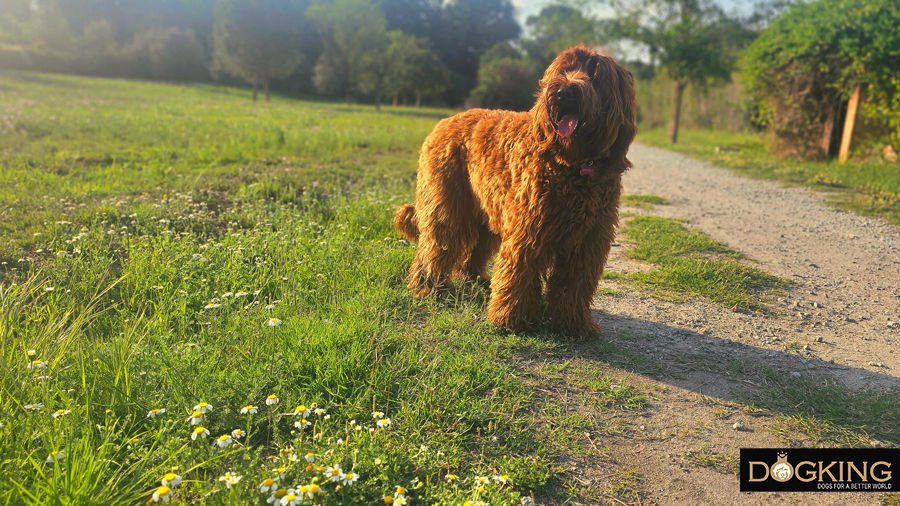Entdecken Sie, wie Sie Ihren Hund vor Stacheln schützen können
Eine Pflanze, die sich in die Haut Ihres Hundes eindringt und viele gesundheitliche Probleme verursachen kann.

WAS SIND STACHELN?
Ungefähre Lesedauer: 8 minuten
Stacheln sind Schoten, die die Samen verschiedener Graspflanzen umhüllen. Die meisten blühen im Frühjahr und sind in der ersten Wachstumsphase grün, dann sind sie stärker mit dem Stängel der Pflanze verwurzelt, und wenn sie zu trocknen beginnen, nehmen sie eine gelbliche Farbe an. In diesem Moment werden sie zu einer großen Gefahr für unsere Hunde, da sie sich leicht von der Pflanze lösen. Seien Sie vorsichtig den ganzen Sommer über mit ihnen.
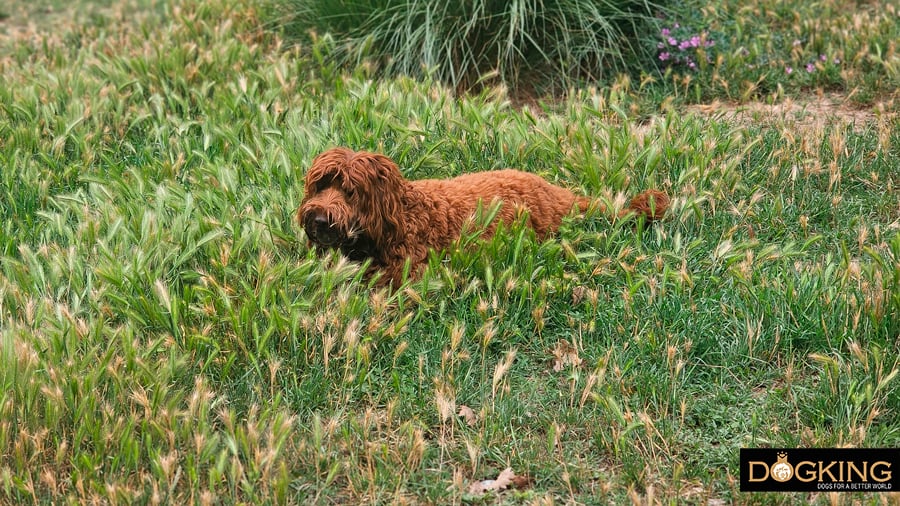
Inhaltsverzeichnis
1- Warum sind Stacheln so gefährlich für Ihren Hund?
2- Ratschläge, wie Sie Ihren Hund vor Stacheln schützen können
3- Was soll ich tun, wenn mein Hund an einer Stachel hängen bleibt?
4- Wenn Ihr Hund eine Stachel bekommt, handeln Sie schnell
Wieso sind Stacheln so gefährlich für Ihren Hund?
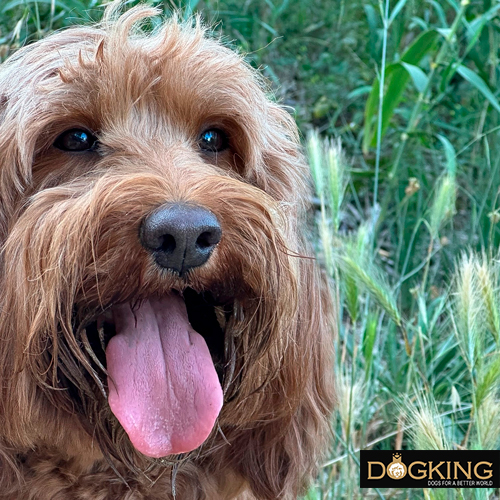
Ihre Pfeilspitzenform macht sie für unsere pelzigen Hunde so gefährlich, denn sie können in der Haut, den Schleimhäuten, den Ohren, zwischen den Fingern oder unter den Augenlidern stecken bleiben, und einige sind sogar durch Aspiration in die Lunge gelangt, so dass sie operativ entfernt werden müssen. Es ist klar, dass sie zahlreiche Gesundheitsprobleme unterschiedlichen Schweregrades verursachen können.
Spaziergänge in der Natur gehören zu den Dingen, die Sie mit Ihrem Hund am meisten genießen. Die frische Luft und die vielen verschiedenen Reize, die es in der Natur oder im Wald gibt, sind zweifellos ein großer Anreiz für unsere Hunde, die sich in der Regel über diese Art von Ausflug freuen. Befolgen Sie unsere Ratschläge, damit Sie weiterhin mit Ihrem Hund spazieren gehen können, ohne dass die Stacheln eine Gefahr darstellen.
Tipps zum Schutz Ihres Hundes vor Stacheln
Hier finden Sie einige Tipps, was Sie tun können, wenn Ihr Hund eine Stachel in seine Haut einklemmt:
- Vermeiden Sie Gebiete mit Stacheln. Idealerweise halten Sie sich nicht in Gebieten auf, von denen wir wissen, dass es dort Stacheln gibt. Somit verringern wir drastisch die Wahrscheinlichkeit, dass unser Hund Probleme mit dieser Pflanze bekommt. Suchen Sie nach neuen Gebieten, in denen die Stacheln nicht so häufig vorkommen.
- Beseitigen Sie die Stacheln. Manchmal ist es vielleicht nicht möglich, aber wenn wir Stacheln in einem bestimmten Bereich eines Parks oder in unserem eigenen Garten entdecken, können wir sie entfernen, um unsere Hunde zu schützen, wobei wir immer ein Gleichgewicht zwischen den Bedürfnissen unseres Haustiers und dem Respekt für die Umwelt bewahren müssen.
- Geeignete Leine. Wenn Sie in die Natur gehen, sollte Ihr Hund im Idealfall nicht an der Leine sein, damit er frei von einem Ort zum anderen laufen kann. Wenn Sie sich jedoch in einem Gebiet mit Stacheln befinden, ist es am sichersten, Ihren Hund an der Leine zu führen. Auf dem Markt existieren lange Leinen von 5 bis 10 bis 15 Metern Länge, mit denen Sie die Zugänglichkeit kontrollieren können, je nachdem, ob das Gebiet sicher ist oder gefährlich sein könnte. Solange keine Gefahr besteht, kann Ihr Hund den Spaziergang genießen, ohne das Gefühl zu haben, angebunden zu sein. Bitte beachten Sie, dass es sich hierbei nicht um Flexileinen handelt, die wir nicht empfehlen, sondern um sehr lange Leinen, mit denen wir kontrollieren können, dass unser Hund nicht in Bereiche mit Stacheln gelangt. Jedenfalls ist es sehr wichtig, dass Sie ihn ständig beobachten, um Unfälle zu vermeiden.
- Kontrolle nach jedem Spaziergang. Nach jedem Spaziergang mit unserem Hund, besonders wenn wir durch Gebiete mit Stacheln gegangen sind, ist es wichtig, seine Haut, Ohren, Pfoten, sein Fell und seine Schleimhäute zu überprüfen. Beobachten Sie sorgfältig seine äußeren Gehörgänge, seine Nase, seine Augen und entfernen Sie Schicht für Schicht sein Fell, um verhedderte oder festsitzende Stacheln auszuschließen. Denken Sie daran, dass ein gut sozialisierter Welpe sich so lange wie nötig erforschen und anfassen lässt.
- Die Wichtigkeit des Bürstens. Das korrekte Bürsten des Fells unseres Haustiers hilft uns, alle Stacheln zu entfernen, die sich möglicherweise am Körper festgesetzt haben. Beim Australian Cobberdog bürsten wir das Fell schichtweise, wobei wir die tiefsten Stellen erreichen, damit kein Bereich unkontrolliert bleibt. Video zum Bürsten
- Besuchen Sie den Hundefriseur. Bei einigen Hunden mit langem Haar kann ein Besuch beim Hundefriseur sinnvoll sein, da sich die Stacheln bei langhaarigen Hunderassen sehr häufig im Haar des Tieres verfangen und, wenn wir sie nicht rechtzeitig entdecken, können sie sich immer mehr in der Haut festsetzen.
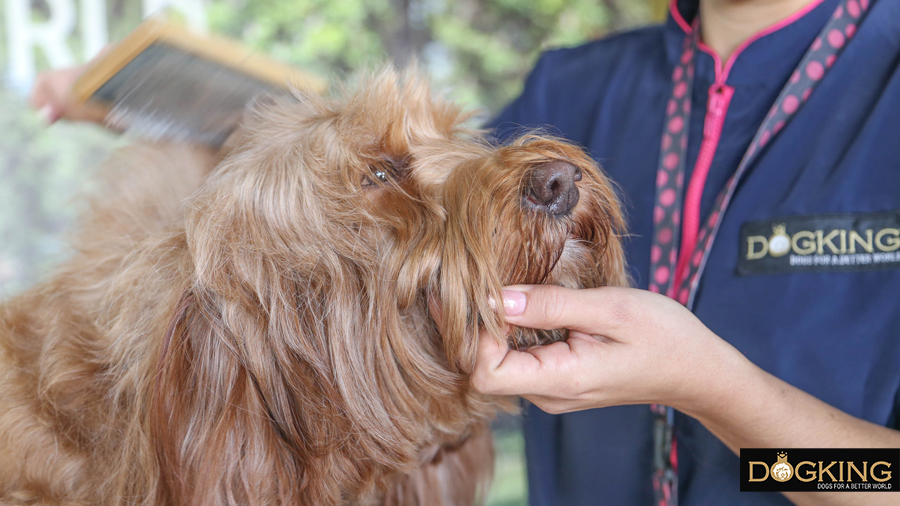
Was soll ich tun, wenn sich eine Stachel in meinen Hund eindringt?
Wenn Ihr Hund trotz Befolgung unserer Ratschläge einen Stachel im Körper hat, gibt es zwei mögliche Situationen. Wenn die Stachel nur oberflächlich eingedrungen ist, können Sie ihn selbst vorsichtig mit den Händen oder einer Pinzette entfernen. Wenn der Stachel tiefer in Ihrem Hund steckt, müssen Sie ihn unbedingt so schnell wie möglich zum Tierarzt bringen, damit er sicher entfernt werden kann. Wenn der Stachel in die Augen, die Nase oder den Rachen Ihres Hundes gelangt ist, sollten Sie ebenfalls schnell einen Tierarzt aufsuchen.
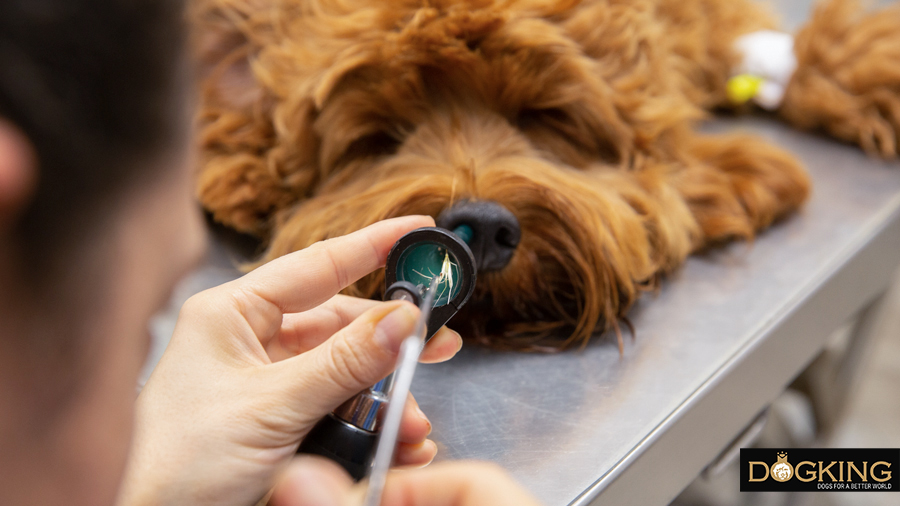
Anzeichen dafür, dass ein Stachel in Ihren Hund eingedrungen ist
Wenn Sie Ihren Hund gut kennen, können Sie erkennen, wenn etwas mit ihm nicht stimmt. Einige Anzeichen, die darauf hindeuten, dass Ihr Hund einen Stachel in sich stecken hat, sind folgende
- Er läuft komisch, als ob ihn etwas stört und er sich nicht wohl fühlt. Er hat möglicherweise einen Dorn zwischen den Zehen, in den Ballen oder an einer anderen Stelle seines Körpers stecken.
- Niesen. Wenn Ihr Hund nicht aufhört zu niesen und ihm ständig die Nase läuft, hat er möglicherweise einen Stachel verschluckt oder er steckt in seiner Nase oder seinem Rachen fest.
- Wenn er plötzlich unruhig wird und nervös wirkt, seltsame Bewegungen macht und Sie allgemein spüren, dass etwas mit ihm nicht stimmt, prüfen Sie, ob sich in der Nähe Stacheln befinden. Wenn ja, ist es mehr als wahrscheinlich, dass eine Stachel in Ihrem Hund stecken geblieben ist.
- Lecken, Kratzen oder Knabbern. Wenn Ihr Hund sich unwohl fühlt, weil eine Stachel irgendwo an seinem Körper steckt, wird er verzweifelt versuchen, sich durch häufiges Lecken oder Kratzen zu erleichtern. Halten Sie in diesem Fall an und untersuchen Sie seinen Körper, denn es könnte sich um eine Stachel handeln.
- Wenn er seinen Kopf schüttelt, hat er möglicherweise eine Stachel im Gehörgang.
Wenn Ihr Hund eine Stachel hat, handeln Sie schnell
Wenn Sie feststellen oder vermuten, dass Ihr Hund einen Stachel verschluckt oder eingeatmet hat, sollten Sie sich so schnell wie möglich Hilfe holen.
Auch wenn es sehr selten vorkommt, kann ein eingedrückter Stachel ohne tierärztliche Behandlung zu einem ernsten Problem führen, das möglicherweise eine Operation erfordert.
Jetzt wissen Sie Bescheid, beachten Sie diese Tipps und schützen Sie Ihren Hund vor Stacheln, damit Sie gemeinsam angenehme Spaziergänge in der Natur ohne Zwischenfälle genießen können.
